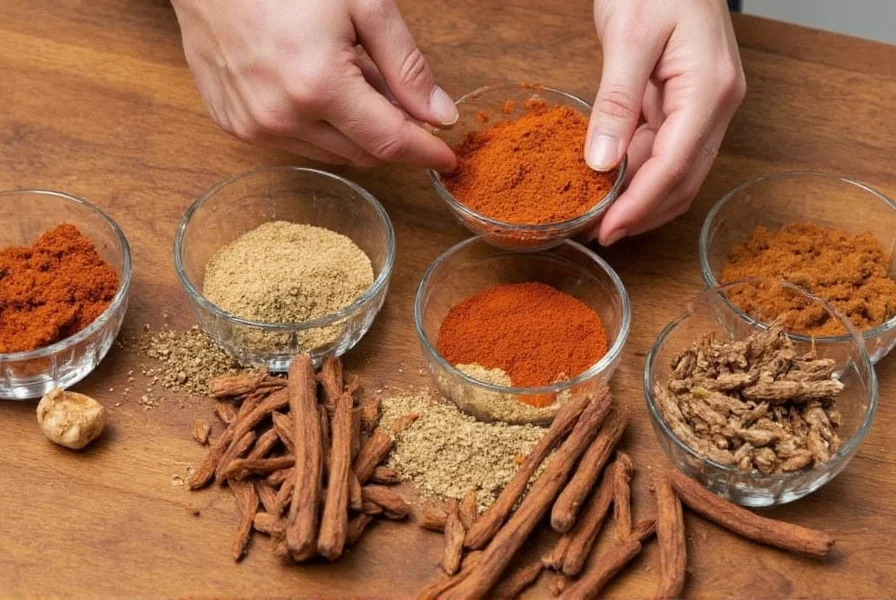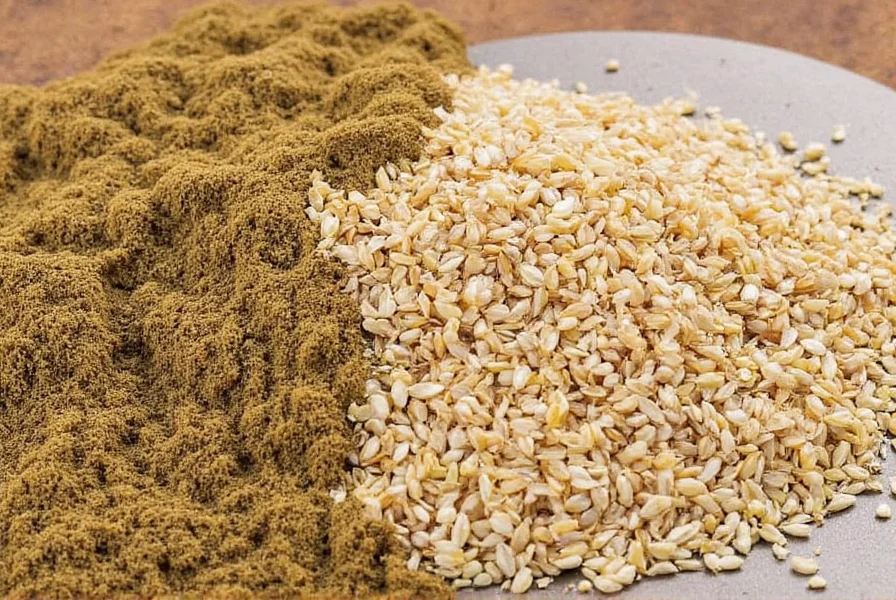Running out of cumin mid-recipe doesn't have to ruin your cooking plans. As a versatile spice with earthy, warm, and slightly citrus notes, cumin plays a crucial role in many global cuisines. Understanding what to use instead of cumin requires matching both flavor profile and culinary function. This guide provides practical alternatives based on availability, flavor compatibility, and recipe requirements.
Understanding Cumin's Unique Flavor Profile
Cumin brings a distinctive earthy warmth with subtle citrus undertones and a hint of bitterness that enhances savory dishes. Its complex flavor comes from compounds like cuminaldehyde, which creates that characteristic nutty, spicy aroma. When seeking what to use instead of ground cumin, consider whether you need to replicate:
- The earthy depth in chili or stews
- The warm background note in spice blends
- The distinctive aroma in Middle Eastern or Mexican dishes
- Just the color contribution in certain recipes
Effective cumin alternatives address one or more of these elements while working with your available pantry items.
Top 5 Practical Cumin Substitutes
| Substitute | Ratio to Cumin | Best For | Flavor Notes |
|---|---|---|---|
| Chili Powder | 1.5:1 | Tacos, chili, Tex-Mex dishes | Milder heat, contains cumin plus garlic and oregano |
| Coriander | 1:1 | Curry blends, roasted vegetables | Citrusy, floral notes without earthiness |
| Garam Masala | 1:1 | Indian curries, lentil dishes | Complex blend with cinnamon and cardamom notes |
| Paprika + Coriander | 0.5:0.5 per 1 part cumin | Stews, roasted meats | Recreates color and partial flavor profile |
| Taco Seasoning | 1.5:1 | Ground meat dishes, bean recipes | Contains cumin plus complementary spices |
Detailed Analysis of Each Cumin Alternative
Chili Powder as Cumin Replacement
When considering what to use instead of cumin in Mexican or Southwestern dishes, chili powder makes an excellent substitute since it typically contains cumin as a primary ingredient. Use 1.5 teaspoons of chili powder for every teaspoon of cumin called for. This alternative works particularly well in:
- Chili con carne
- Taco meat seasoning
- Bean dishes and salsas
Be aware that chili powder varies by brand—some are spicier than others. For milder dishes, choose "mild" chili powder to avoid overwhelming heat when replacing cumin.
Coriander for Cumin Substitute Needs
Coriander offers the closest single-spice alternative when you need what to use instead of cumin, particularly in Middle Eastern and Indian recipes. While lacking cumin's earthiness, coriander provides complementary citrus notes. Use equal parts coriander to replace cumin in:
- Hummus and baba ganoush
- Curry bases
- Roasted vegetable seasonings
For better flavor matching, combine coriander with a pinch of smoked paprika to approximate cumin's earthy depth when you're out of cumin.
Garam Masala as a Complex Alternative
Garam masala serves as an excellent cumin substitute when you need what to use instead of cumin in Indian recipes. This blend typically contains cumin plus warming spices like cinnamon, cardamom, and cloves. Use a 1:1 ratio when substituting for cumin in:
- Dal and lentil dishes
- Curry bases
- Marinades for meats
The complex flavor profile means garam masala works best in recipes where cumin plays a supporting rather than starring role. Avoid using it in dishes where cumin's distinctive flavor is central.

Special Considerations for Specific Recipes
When Making Chili Without Cumin
For authentic chili flavor when you need what to use instead of cumin, combine:
- 1 tsp chili powder
- ½ tsp smoked paprika
- ¼ tsp oregano
- Pinch of cayenne
This blend replicates cumin's earthy warmth while maintaining the complex spice profile chili requires. Many home cooks searching for what to use instead of cumin in chili specifically need this balance of heat and earthiness.
Cumin Alternatives for Hummus and Middle Eastern Dishes
Traditional hummus relies on cumin's distinctive flavor. When determining what to use instead of cumin in these recipes, try:
- Equal parts coriander plus a pinch of sumac
- 1 part coriander + ½ part caraway seeds (use sparingly)
- Za'atar blend at 1:1 ratio
Caraway seeds offer the closest flavor match to cumin but are significantly stronger, so use only half the amount you would cumin. This knowledge helps when you're looking for what to use instead of cumin in authentic Middle Eastern cooking.
Creating Your Own Cumin Replacement Blend
When you need what to use instead of cumin and want maximum control over flavor, create this custom blend:
- 2 parts coriander
- 1 part smoked paprika
- ½ part garlic powder
- ¼ part cayenne (optional for heat)
Mix thoroughly and store in an airtight container. Use equal parts of this blend to replace cumin in most recipes. This homemade alternative works particularly well when you're searching for what to use instead of cumin in everyday cooking where precise flavor matching matters.

When Substitutes Won't Work: Recipes That Require Real Cumin
Some dishes rely so heavily on cumin's distinctive flavor that substitutes fall short. These include:
- Authentic adobo seasoning
- Certain mole recipes
- Traditional berbere spice blend
- Specific regional chili variations
In these cases, consider making a quick store run rather than substituting. Understanding when you truly need what to use instead of cumin versus when to wait for the real ingredient prevents disappointing results in cumin-dependent recipes.
Storage Tips for Cumin and Substitutes
Prevent future cumin emergencies by properly storing your spices:
- Keep in airtight containers away from light and heat
- Grind whole seeds as needed for maximum freshness
- Label containers with purchase dates (spices lose potency after 6-12 months)
- Store in cool, dark pantry rather than above the stove
Having properly stored spices means you'll rarely need to search for what to use instead of cumin due to stale or expired ingredients.











 浙公网安备
33010002000092号
浙公网安备
33010002000092号 浙B2-20120091-4
浙B2-20120091-4